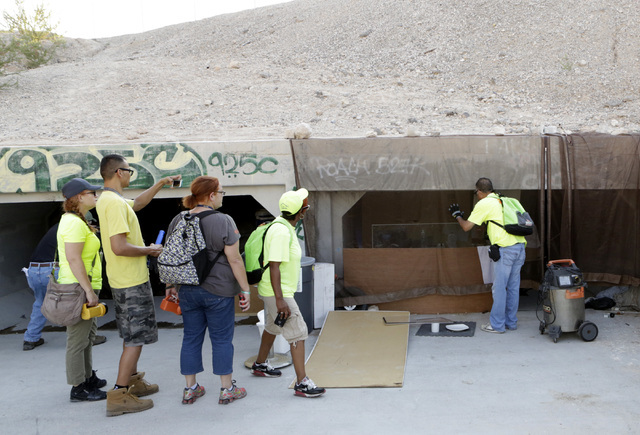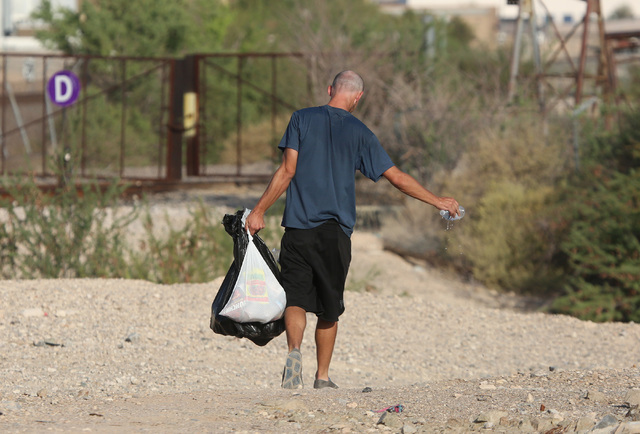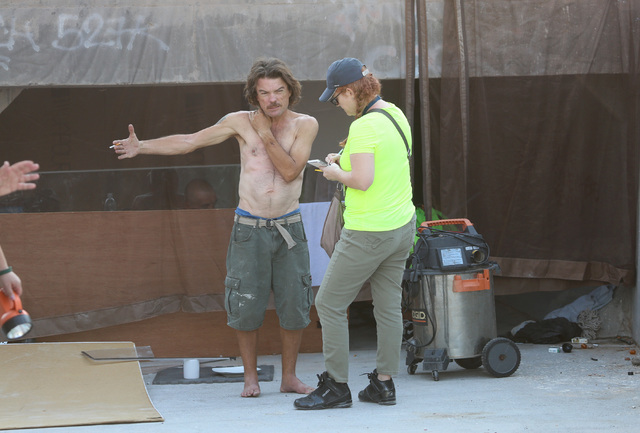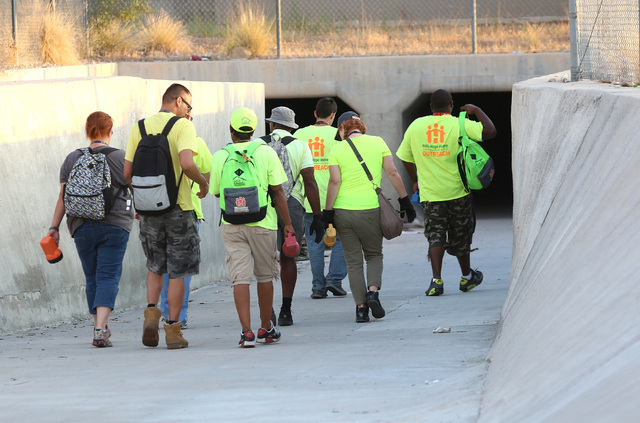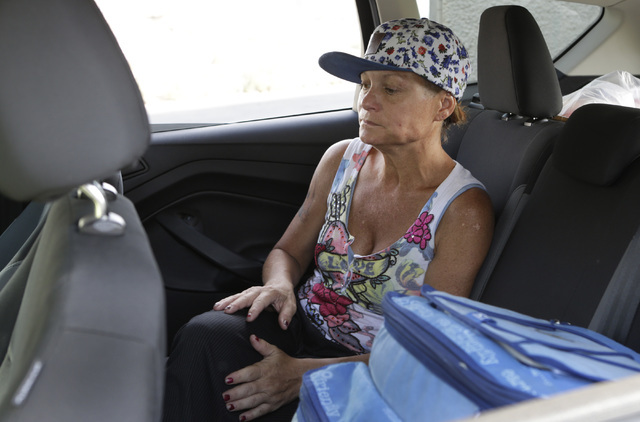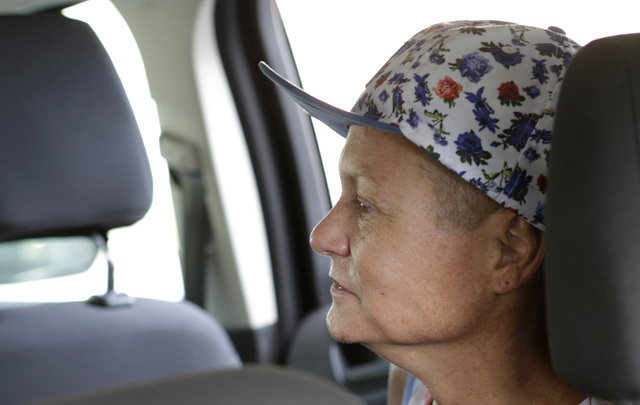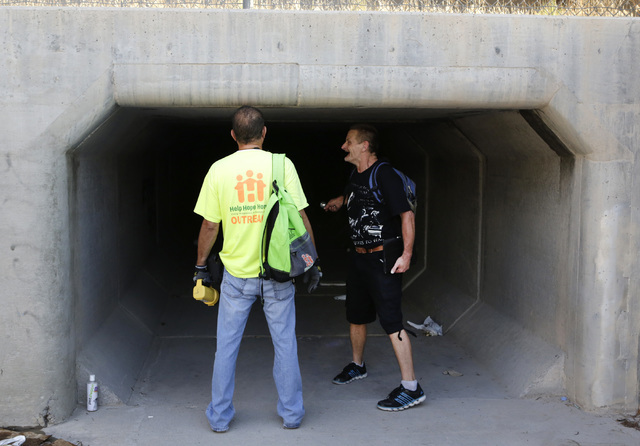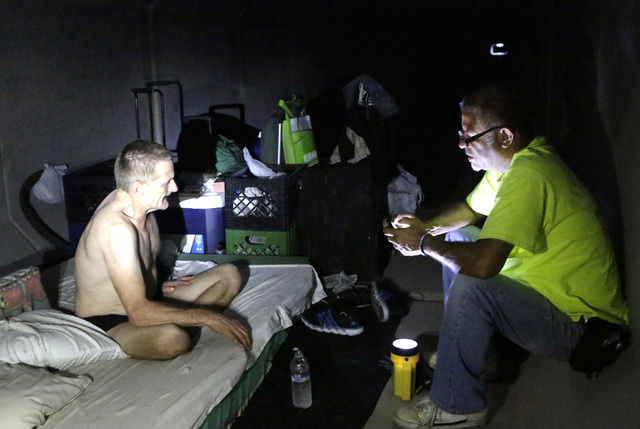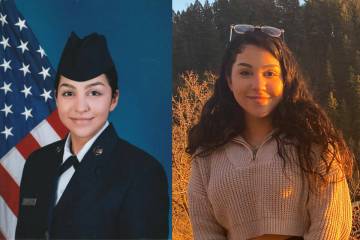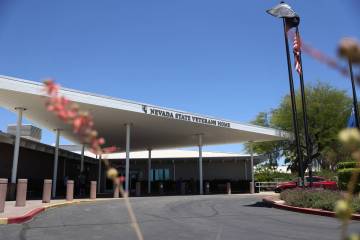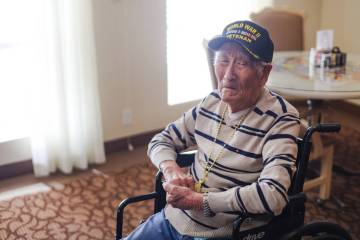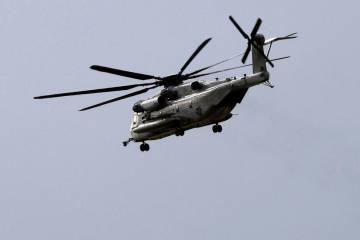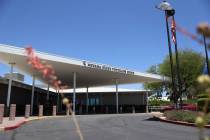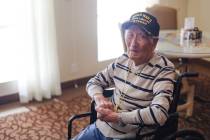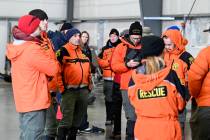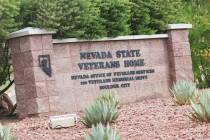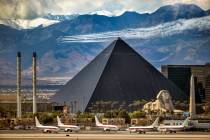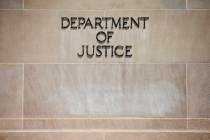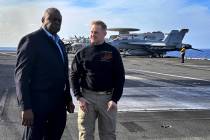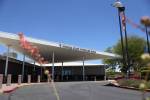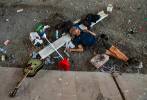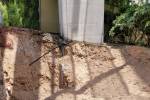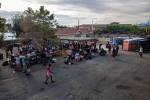‘Planting seeds’ to help Las Vegas’ homeless veterans get off the streets
Louis Lacey gave a final instruction to his crisis intervention team before heading out to search for homeless veterans in tunnels near the Strip.
“Let’s go save some people,” he said at the end of his briefing Thursday at the Owens Avenue Veterans Affairs clinic.
With their flashlights shining as the first rays of sunlight cast an orange glow over the Las Vegas skyline, Lacey emphasized they were on a mission to engage homeless veterans, as well as warn all tunnel dwellers that flash floods loomed with heavy rains forecast for the weekend.
Determining the number of veterans living on and beneath the city’s streets is crucial to gauging the success of efforts to find housing for them. It coincides with the release of national data Monday by the Department of Housing and Urban Development that is expected to show a decline in homelessness among veterans.
Cities served by Lacey’s employer — the nonprofit social service entity HELP of Southern Nevada — pride themselves on drastically reducing the number of homeless veterans under a program launched by first lady Michelle Obama in 2014.
In December, the cities of Las Vegas, Henderson, North Las Vegas, Boulder City and Mesquite, along with Clark County, met their goals under the Mayors Challenge to End Veteran Homelessness by finding housing and self-supporting jobs for veterans.
The number of homeless vets locally stood at 692 in June 2015, down from 2,000 five years ago. By December, HUD declared Southern Nevada had achieved “functional zero,” meaning the valley had enough services and programs to house every homeless veteran.
But according to Phyllis Cobb, the VA’s community resource and referral center program manager, there is uncertainty about how many veterans remain on the streets. A HUD formula for estimating homeless veterans had set the Southern Nevada number at more than 300.
“The 2016 point-in-time count appears to be higher than what we are actually finding,” she said.
Only two turned up in the first few tunnels that the team explored Thursday.
TUNNEL LIFE
Before leaving the VA clinic, Lacey, once homeless himself, advised the team to avoid confrontational encounters and contact with damp surroundings or unsanitary conditions. He recommended wearing gloves and hiking boots, especially in tunnels that might have needles discarded by drug users
“We don’t want to make them feel funny but we also want to be safe,” said Lacey, 54.
“I can tell you from personal experience I was in the tunnels in 2007 and I accidentally somehow got H1N1 (swine flu virus) and subsequently ended up in the hospital. I almost died,” he said.
The first stop was a tunnel beneath Las Vegas Boulevard within sight of the “Welcome to Fabulous Las Vegas” sign where one tunnel occupant drowned when she was swept away by a wall of water a few weeks ago.
Lacey shined his flashlight on the floor near a man lying on a mattress to alert him about the possibility of flash floods in the coming days.
“So we don’t have a repeat of last time, if you could — please, bro — if you want to go to a shelter I’ll take you. But if not then please make sure you get out,” he said.
The way the team engages homeless veterans includes “planting seeds,” or distributing yellow outreach information cards, Cobb said.
Out in the field, VA clinical social worker Tammi Ewing said the team engages “all people who are experiencing homelessness and they in turn help us locate the veterans who are out here.”
That was the case for a Marine veteran, Colton, who received food and water from the team and was offered a housing opportunity but declined.
Colton, who wouldn’t give his last name for publication, served in Afghanistan before he was given a general discharge under honorable conditions in 2012, making him eligible for VA services, Lacey said.
Colton said the Afghanistan experience “was an eye opener.”
“When I got out within the first week I was back to my drug problem, which was opiates,” he said, noting that he’s been homeless for “three or four months.”
He was on his way to San Diego when his car was stolen, leaving him stranded in Las Vegas. He said he’s lost contact with his family “and kind of don’t care right now how I live.”
Another Marine veteran located Thursday, Dawn Louden, 42, welcomed the VA’s outreach help. An honorably discharged Marine who served in a Harrier squadron support unit at Marine Corps Air Station Yuma, Arizona, she came to Las Vegas on vacation from Texas in 2015.
“Within three days I had my I.D. stolen, (and) my phone and was kicked out of the hotel,” she said, explaining how she became homeless.
On the way to be processed at the VA Community Resource and Referral Center, Louden said the program “is a great thing. I think there’s a lot of people out here that need help.”
Living in a tunnel has been “hell, really,” she said. “If you didn’t think you were in hell then you meet somebody who wants to trigger your past, which wasn’t that great, so you start all over with hell again. It’s not been fun at all.”
Contact Keith Rogers at krogers@reviewjournal.com or 702-383-0308. Find him on Twitter: @KeithRogers2



